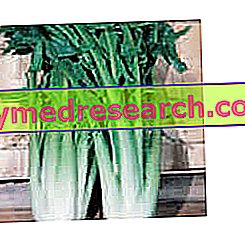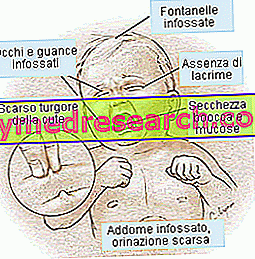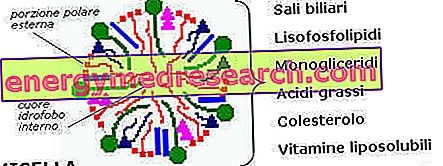What is Chicory?
The Catalonian chicory or asparagus chicory is a vegetable belonging to the Asteraceae family and to the Genus Cichorium ; its binomial nomenclature is Cichorium intybus L ..

Outlines of gastronomy
As anticipated, the different varieties of chicory of Catalonia or asparagus chicory can be used for very different culinary preparations. Of the Galatina one, the more tender puntarelle are eaten raw, while the other types (for example the "Chioggia" chicory or the "brindisina") must necessarily be boiled. To properly cook the Catalonian chicory just follow a few simple steps:
- Boil plenty of water in a pan (with or without salt and with or without half a lemon, depending on taste)
- Cut and remove the head of the head (about 4 cm thick)
- Divide the coasts
- Wash them thoroughly
- Of each, separate the predominantly branchy portion from the foliar portion
- Cut (keeping them separate) the two portions of the ribs into pieces of about 5-10cm
- Blanch the pieces of the ribs for the time necessary to soften them and, much more quickly, the leaves
- Allow to drain in a colander
- Serve naturally or sauté with a little whole and dressed garlic, salt (if necessary) and pepper.
Nutritional characteristics
First of all it is opportune to specify that, even if blandly, the Catalonian chicory or asparagus chicory boasts some characteristics of phytotherapic type; it is laxative, probably due to its good concentration in dietary fiber (even if not mentioned in the table), it effectively modulates the glycemic index of the meal and reduces the absorption of cholesterol (again by virtue of the non-digestible fibrous components - viscous), it stimulates digestive secretion and induces a discrete diuretic reaction.
The energy intake of the Catalonian chicory or asparagus chicory is decidedly contained, as it provides a very high amount of water BUT little energy nutrients. On the other hand, the Catalonian chicory or asparagus chicory is distinguished by the good nutritional value of mineral salts, vitamins and antioxidants in general. The Catalonian chicory or asparagus chicory is a vegetable rich in potassium MA especially calcium (essential in the growth phase and in the prevention of osteoporosis), while as far as the vitamins are concerned we can appreciate discrete values of antioxidant carotenoids (pro-vit. A ). Due to these characteristics, the chicory of Catalonia blends well with all diets, contributing to the coverage of antioxidants, fiber and many vitamins and minerals.
Nutritional values (per 100 g of edible portion)
Nutritional composition of field chicory and cutting chicory - Reference values of INRAN Food Composition Tables

| Chemical composition and energy value of foods per 100g of edible portion | Field chicory, raw | Field chicory, boiled | Cutting chicory, cultivated | |
| Edible part | 80.0% | 100.0% | 89.0% | |
| water | 93, 4g | 93, 4g | 95, 0g | |
| Protein | 1.2g | 1.4G | 1.2g | |
| Lipids TOT | 0.2g | 0.2g | 0.1g | |
| B.C. saturated fats | - g | - g | - g | |
| B.C. monounsaturated fats | - g | - g | - g | |
| B.C. polyunsaturated fats | - g | - g | - g | |
| Cholesterol | 0, 0mg | - g | 0, 0mg | |
| TOT Carbohydrates | 0.7g | 0.7g | 1, 7g | |
| Starch / Glycogen | 0.0g | 0.0g | 0.0g | |
| Soluble sugars | 0.7g | 0.7g | 1, 7g | |
| Dietary fiber | 3, 6g | 3, 6g | - g | |
| Power | 10, 0kcal | 10.0g | 12, 0kcal | |
| Sodium | - mg | - mg | 7, 0mg | |
| Potassium | - mg | - mg | 180, 0mg | |
| Iron | 0, 7mg | - mg | 1.5mg | |
| Football | 74, 0mg | - mg | 150, 0mg | |
| Phosphorus | 31, 0mg | - mg | 26, 0mg | |
| Thiamine | 0, 03mg | - mg | 0, 03mg | |
| Riboflavin | 0, 19mg | - mg | 0, 08mg | |
| Niacin | 0.3mg | - mg | 0.3mg | |
| Vitamin A | 219, 0μg | 300, 0μg | 267, 0μg | |
| C vitamin | 17, 0mg | 8, 0mg | 8, 0mg | |
| Vitamin E | - mg | - mg | - mg | |
Bibliography:
- Fruit and vegetables in Italy - L. Cabrini, F. Malerba - Italian Touring Club - page 81
- Food composition tables - National Research Institute for Food and Nutrition (INRAN).



